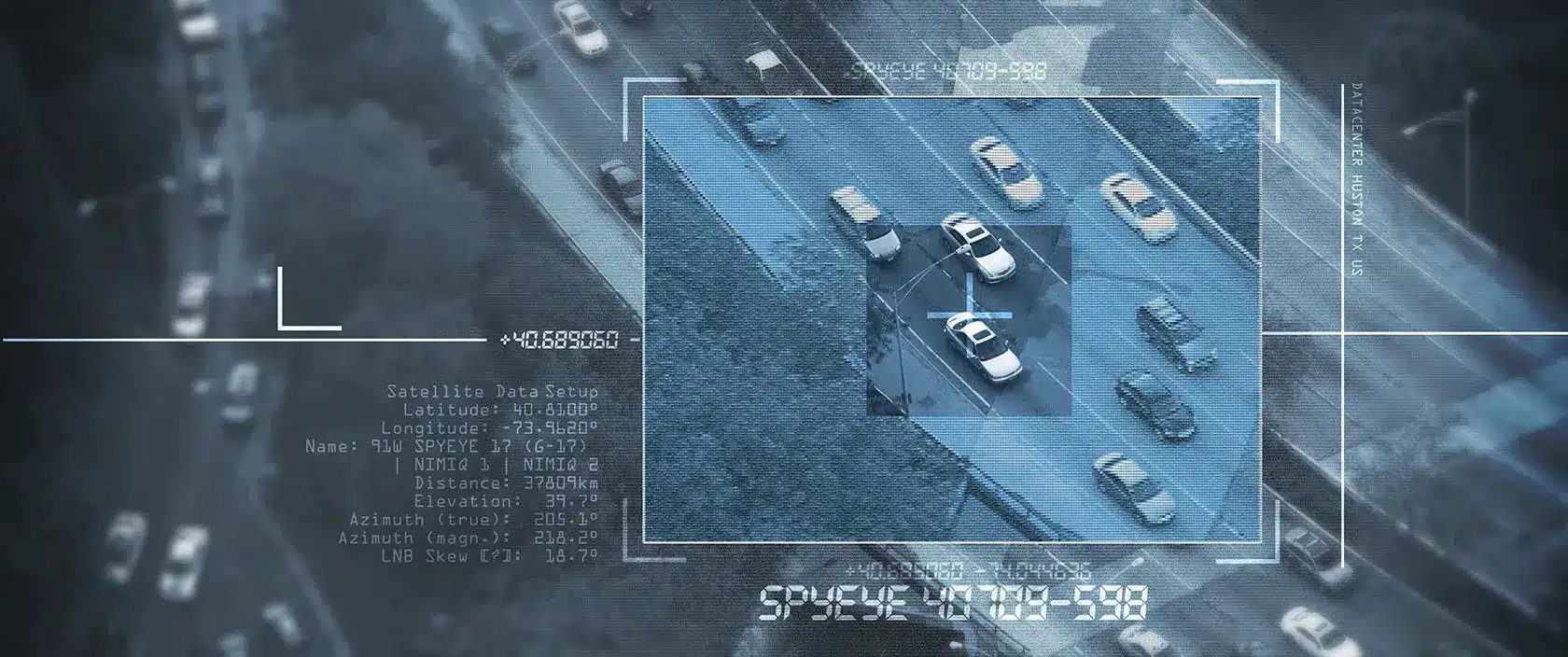An investigator shared a fascinating story of a crime ring targeting multiple warehouses. What was interesting is that several of the warehouse owners did not report the warehouse crimes. As non-citizens, they didn’t want to risk contacting the police. Fortunately, they were able to get insurance to cover the loss.
These owners had no idea there had been a rash of warehouse crimes nearby. The investigator pieced together the story and discovered that a cemetery was involved. The cemetery fence had holes in two locations. The maintenance workers didn’t suspect anything as their job was to fix the fence.
The cemetery staff also had no idea their cemetery played an important part in an organized crime ring’s warehouse crime wave. The crime ring would drive a golf cart with a trailer through the large hole in the cemetery’s fence and access nearby warehouses.
The crooks would then use sledgehammers to make a hole in the back of the warehouse wall. If anyone caught them, they’d easily get away through that hole. They took as much as they could from the warehouse, loaded it on the golf cart, and carried the stolen goods to a big truck outside the cemetery fence.
Nothing was stolen from the cemetery. Therefore, the cemetery staff had no reason to think a crime had taken place on their property. The suspects lucked out that the warehouses didn’t communicate with each other or the cemetery administration to figure out the common denominator.
One warehouse had video cameras, but they showed only the inside of the warehouse. There were areas around and outside the warehouse that weren’t in view. But how did the night watchman not hear the sledgehammers banging away? The sound of sledgehammers can reach 100 decibels, enough to threaten hearing health. As a comparison, the sound of conversation is 60 dB and city traffic runs about 85 dB.
The Cost of Warehouse Crimes
Warehouse crimes tend to be big. USC Annenberg Media reports on a robbery where suspects got away with about $30 million from a warehouse. The crime happened on a Sunday night. No one knew about it until workers came in on Monday morning. Supposedly, the heist set off an alarm, but law enforcement never got the call.
Los Angeles Police investigators of the Sylmar warehouse theft said they committed the perfect crime. For one thing, the scene of the crime showed no signs of anyone breaking into the vault.
In Canada, Air Canada’s warehouse had more than 6,000 gold bars stolen. They’re valued at 20 million Canadian dollars, which is equivalent to USD$14.5 million. They also took CA$2.5 million (USD$1.8 million) in foreign currency. According to the WGRZ story, it’s the largest gold heist in Canada.
Law enforcement charged a warehouse employee and former manager for the warehouse crime. They may have used fictitious pickup to commit cargo theft.
Eight suspects in New York have been charged with theft at multiple warehouses and rail yards across the Northeastern U.S. according to Trains. Prosecutors refer to the criminal gang as the “Beer Theft Enterprise” and they used a “beer train method” to commit the crimes.
They would park a truck by the fence of a warehouse and cut through the fence. The ring sold the products to buyers getting hundreds of dollars for one robbery.
“For years, the Beer Theft Enterprise has operated brazenly, allegedly breaking into rail yards and beverage distribution facilities throughout the northeast and filling U-Haul box trucks to the brim with cases of beer,” U.S. Attorney Damien Williams told Trains. “That dangerous and disruptive conduct — sometimes allegedly accompanied by the threat of violence — has left several beverage distribution and railroad companies ailing.”
These are some of the many stories of warehouse crimes where crooks took items worth millions of dollars. These stories show warehouse managers need to worry about external theft as well as internal theft.
These cases and cargo theft statistics indicate not having effective security creates a major financial burden that justifies the investment in smart warehouse security solutions. An effective warehouse security system comprises multiple prongs.
However, one solution comes with multiple layers, can yield a fast ROI, and deter crime. The solution is video surveillance with remote monitoring that involves human trained monitoring operators and artificial intelligence.
Why Remote Video Surveillance Must Be Part of Warehouse Security
As one of the warehouse crime scenarios mentioned, a traditional alarm system is a reactive solution. Only one alarm went off and it didn’t do anything. It didn’t alert the company or the police. What good is an alarm system if it doesn’t signal anyone?
Video surveillance with remote monitoring comes with round-the-clock coverage across the entire warehouse property. Posting security cameras inside, outside, and around the facility, including loading zones and parking lots is essential. Warehouses incorporating remote video surveillance gain a proactive security solution that can avert crime before it occurs.
The key benefit of this technology is remote video monitoring. If no one watches or monitors the cameras, then the technology turns into passive security as the alarms in the story did nothing. When you don’t have AI working with humans to monitor the cameras, then it could create a liability problem because it could give people a false sense of security. Thus, video surveillance with monitoring helps lower liability.
Additionally, security cameras can capture crime rings and other bad actors in a recording. The cameras can see and save everything including hard-to-access spaces like the roof. There’s still the challenge of the human factor as you’re only as strong as your weakest links, which are humans.
This is another benefit of video surveillance with remote monitoring instead of onsite monitoring. Remote monitoring operators are far less likely to conspire to commit a crime when they’re not close to the building compared to onsite personnel.
How to Secure Warehouses to Mitigate Crimes
Remote video surveillance offers a lot of aspects for securing a warehouse. However, there are things that can be done to help enhance security. Aside from cameras, here are three more ways to help mitigate warehouse crimes.
Create a security plan
After completing a risk assessment, you should craft a security plan. The purpose of a security plan is to document warehouse layout to identify perimeter security vulnerabilities. The plan describes the security needs for the entire perimeter including the warehouse and its surroundings. Make sure it outlines the process of creating, evolving, and conducting security training for employees on a regular basis. (Refer to the next item.)
Here’s why training employees in security is crucial. All it takes is one person’s mistake to create a security loophole. It can be as easy as letting someone tailgate or piggyback into the facility. Therefore, people and processes are a vital part of warehouse security’s success.
Prioritize training
Investing in training and education can be less expensive than the cost of a warehouse crime or injury. Companies that go the most days without injuries give precedence to training and document safety processes and procedures. Safety and security-related training is worth repeating and overcommunicating. Workers don’t always remember the first, second, or third time they get the message.
Another valuable component is for workers to conduct daily safety checks at the start and the end of the day. Some equipment and tools require prep time and shut-down steps to maximize safety.
During training, emphasize the need for workers to report safety hazards. They need an anonymous way to submit a report because they may fear backlash. An EHS Daily Advisor article points to research that reveals workers only speak up about 39% of the time. That’s dismal. Keep encouraging workers to report problems.
Integrate an access control system
An easy way to manage access and entry is with an access control system. Its job is simple. It lets authorized people enter the building and keeps unauthorized people out. The warehouse staff can control access to different parts of the facility and limited-access rooms.
The access control system can also manage who can get through the gate and the parking lot. Whenever someone quits or gets fired, it takes seconds to turn off their access to the warehouse.
An access control system comes with these benefits:
- Controls external access.
- Eliminates the need for keys.
- Incorporates photo identification.
- Prevents tailgating and piggybacking.
- Authenticates identities with integrated access control.
- Reduces manual security procedures.
Access control solutions can help track who accesses every part of the warehouse. It’s possible to integrate an access control system with remote video surveillance.
How to Shop for Security That Deters Warehouse Crimes
In searching for video surveillance with remote monitoring and access control system services, ask around to make a list of security companies with experience in working with warehouses. The industry has unique requirements. What may be an effective solution for a non-warehouse business won’t work for warehousing.
Take a look at Stealth Monitoring. They will customize the right-sized solution that helps mitigate warehouse crimes and boost safety. In selecting Stealth, you’ll tap into the brains of security professionals with experience in securing warehouse facilities like yours. Have questions about security to help ensure warehouse safety? Contact us.
Texas Private Security License Number: B14187
California Alarm Operator License Number: ACO7876
Florida Alarm System Contractor I License Number: EF20001598
Tennessee Alarm Contracting Company License Number: 2294
Virginia Private Security Services Business License Number: 11-19499
Alabama Electronic Security License # 002116
Canada TSBC License: LEL0200704





